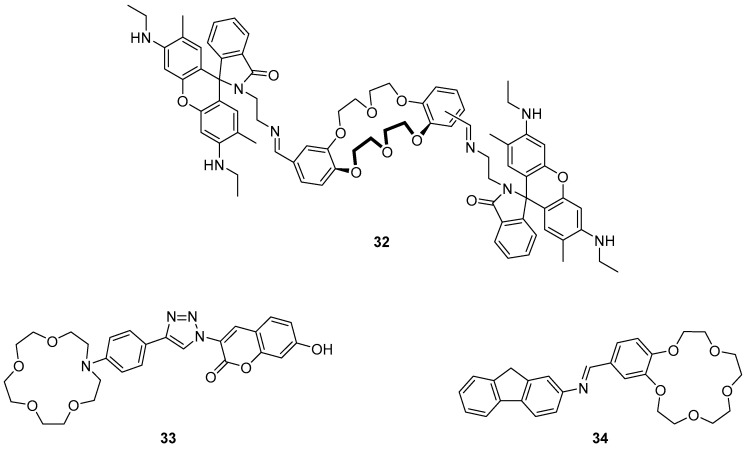Figure 14.
Rhodamine-crown ether conjugate 32 was prepared as a mixture of regioisomers (as indicated), and found to be a selective probe for Cr3+; this substrate elicits a turn-on response from the rhodamine fluorophore that is thought to arise via metal-mediated opening of the spirolactam [109]. Triazolyl-coumarin-aza-crown ether 33 responds strongly to Hg2+, Fe3+ and Cr3+, with solvent-dependent variations in response: in water, Fe3+ triggers a strong enhancement of the fluorescence emission at 475 nm, with weaker responses to Hg2+ and Cr3+, while in ethanol it is Hg2+ that elicits the strongest response, and smaller responses are seen to Fe3+ and Cr3+ [110]. Fluorenyl-imine derivative 34 is a very sensitive and selective probe for Cu2+, which triggers a ca. 54-fold fluorescence enhancement thought to arise due to inhibition of both PET and C=N isomerisation quenching processes [111].

